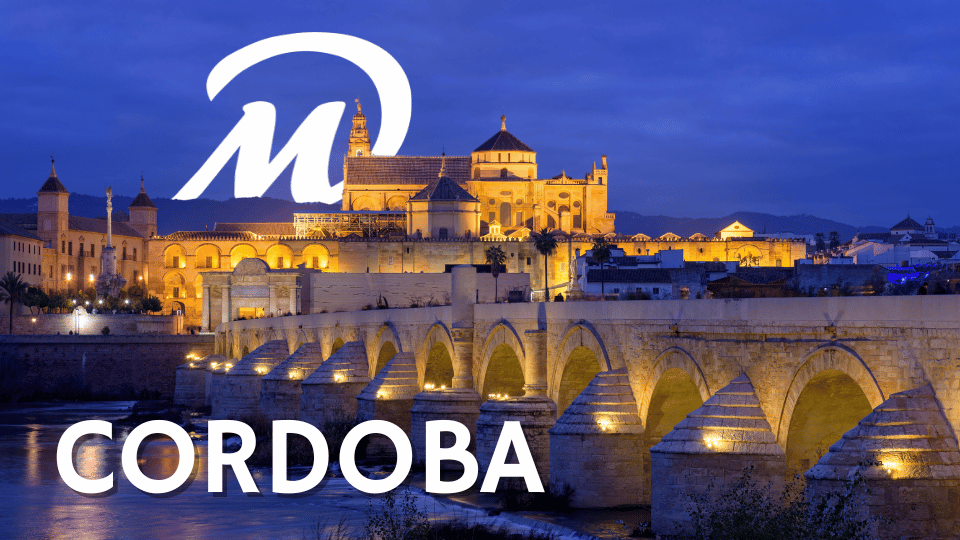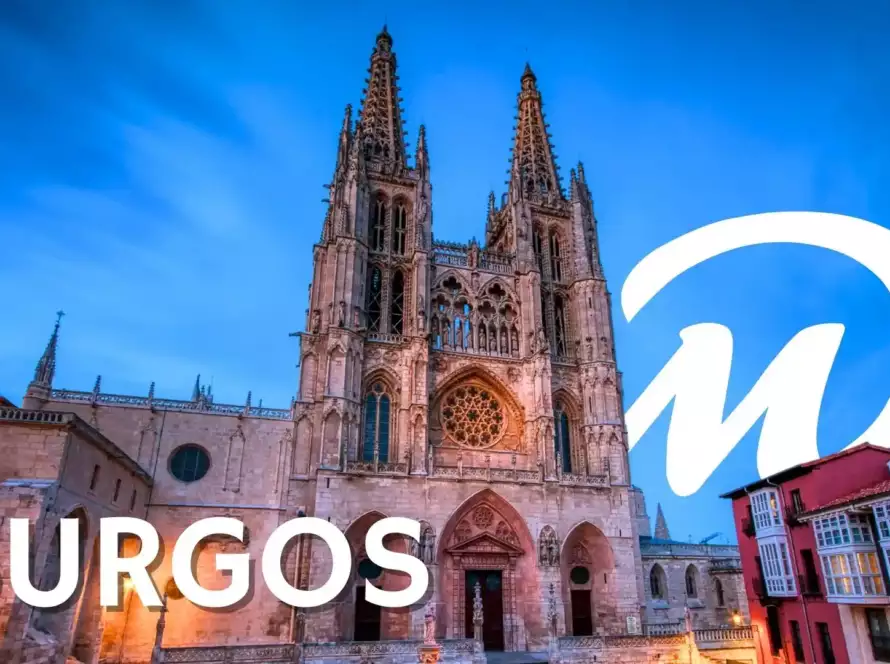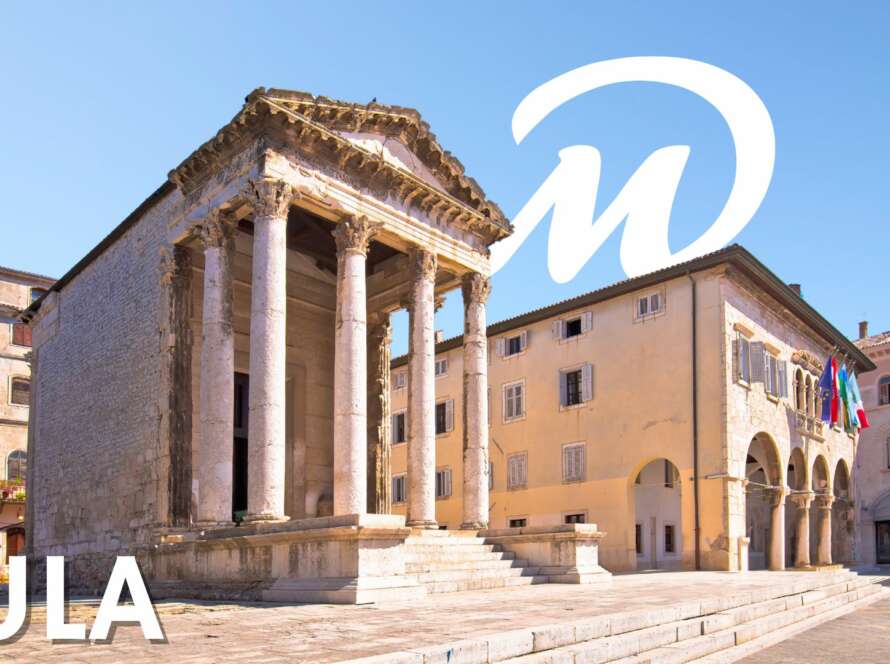Things to do in Warsaw. The city that rose from the ashes. in Warsaw, the city that rose from the ashes! If you’ve ever wanted to see a place where history can be felt in every street and modernity never ceases to surprise you, Warsaw is your ideal destination. Located in the heart of Poland, this city is a great example of European resilience: almost completely destroyed in World War II, it has managed to rebuild itself with strength, mixing its historical legacy with contemporary architecture, urban art and a vibrant cultural life.
If you’re wondering things to do in Warsaw, you’ll find everything from the reconstructed Old Town, with its Market Square and Royal Castle, to landmarks such as the Palace of Culture and Science and Łazienki Park, with its famous Chopin monument. Every corner has a story to tell: some harsh, some inspiring, but all of them must-see.
In addition, its vast parks, world-class museums such as the Warsaw Rising or the Vodka Museum, and its royal palaces and gardens make the Polish capital an ideal city for urban explorers.
ready to discover a city that combines memory, art and modernity like few others?
warsaw awaits you with a pierogi (dumpling) in one hand and a glass of vodka zubrówka in the other!
come on, let’s go!
DO YOU WANT TO KEEP SEARCHING THROUGH BLOGS, OR WOULD YOU RATHER HAVE YOUR GUIDE TO WHAT TO SEE IN WARSAW READY?
The DareMapp app makes it easy. Enjoy the COMPLETE GUIDE ON YOUR MOBILE and experience every corner in a unique way. No timetables and at your own pace.
Things to do in Warsaw. A capital with history, soul and future
Warsaw is a destination that blends past and present at every step. From the romantic Royal Promenade to the modern skyscrapers of the financial centre, this European capital is not only witness to its tragic past, but also to an impressive transformation. In this blog, we will take you through the most emblematic places to see in Warsaw, but also those secret and alternative corners that make this city a unique experience.
Warsaw is a city with a soul, and in this guide to things to do in Warsaw you will discover how to explore it step by step, without missing anything and enjoying every moment.
did you know that you can admire the Palace of Culture and Science, tour a contemporary art gallery underground, and end the day in a milk bar sampling traditional Polish dishes for just a few zlotys? That’s Warsaw: contrasts, surprises, and character.
If you’re planning your trip and wondering things to do in Warsaw, here’s a complete guide to the must-see sights… and much more.
Things to do in Warsaw: keys to organise your visit
If you’re looking for things to do in Warsaw, get ready for a city that won’t leave you indifferent. With a history marked by invasions, resistance and reconstruction, Warsaw is a place where memory lives side by side with innovation. From historic monuments such as the Royal Castle and the Ghetto Monument, to cosy cafés on Nowy Świat Square, modern museums and alternative neighbourhoods, there is something for everyone.
Although it’s best to wander the streets and soak up the atmosphere, we’ve put together a comprehensive list of must-see sights in Warsaw that will make your stay in Warsaw much more than just a getaway.
Whether you’re a lover of history, urban art, communist architecture or green spaces, Warsaw has it all.
👁️Deiscover and explore what to see in Warsaw, a city with more stories than excuses not to visit.
Don’t miss out. With DareMapp, your new tourism app, your guide on your mobile and without complications!
Tips to travel with peace of mind
When everything is ready — flights, hotel, itinerary — there are only two more things you need to travel worry-free: a good internet connection and reliable travel insurance.
✔ Get an international eSIM already set up on your phone. No need to change your SIM card, search for Wi-Fi, or pay for roaming. Activate it before your trip and enjoy unlimited data from the very first minute, wherever you are.
✔ Take out travel insurance that includes medical assistance 24/7, coverage for cancellations, theft, and — most importantly — advance payment of all medical expenses without you having to pay, wherever you are. Because in a new country, what matters most is feeling safe. Moreover, DareMapp offers you a 5% discount.
Both services can be arranged online in less than 5 minutes, with no paperwork required.
Don’t leave it to the last minute!
👉 Activate your Holafly eSIM at the best price here.
👉 Take out your travel insurance with IATI and get a 5% discount.
Must-see places in Warsaw
Castle Square
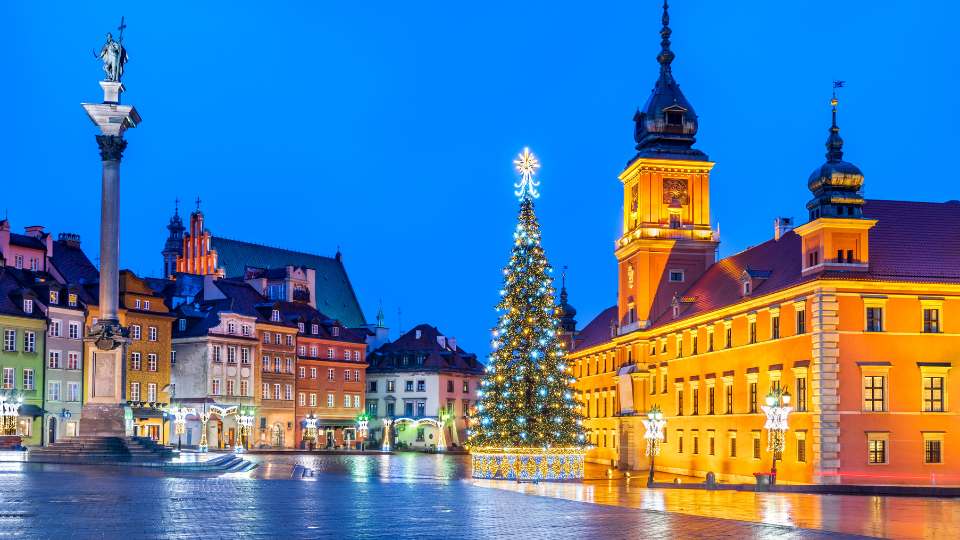
Castle Square is one of the most emblematic and lively places to see in Warsaw. Located at the entrance to the Old Town, it is the ideal starting point for any tour of the city. This large cobbled esplanade, presided over by the majestic silhouette of the Royal Castle, has witnessed coronations, parades, insurrections and reconstructions, and is today one of the most photogenic urban spaces in the Polish capital.
In the centre of the square stands the imposing Sigismund III Vasa Column, a 22-metre high monument erected in 1644 to honour the king who moved the capital from Kraków to Warsaw. It is one of the oldest and most beloved symbols of the city, and a regular meeting point for locals and tourists alike.
Surrounded by colourful facades rebuilt after World War II, the square combines history, architectural beauty and urban life. From here you can access the Royal Castle, whose palatial interiors can be visited, and picturesque streets such as Świętojańska or Kanonia, where the atmosphere of old Warsaw is still alive. In winter, the square hosts Christmas markets with lights, music and traditional sweets, and in summer, open-air concerts and cultural events.
It is also a perfect place to sit on a terrace, enjoy the atmosphere and watch life flow in the Old Town.
A must-see stop in Warsaw to start your trip with history, charm and the best views of the historic centre.
Old Town
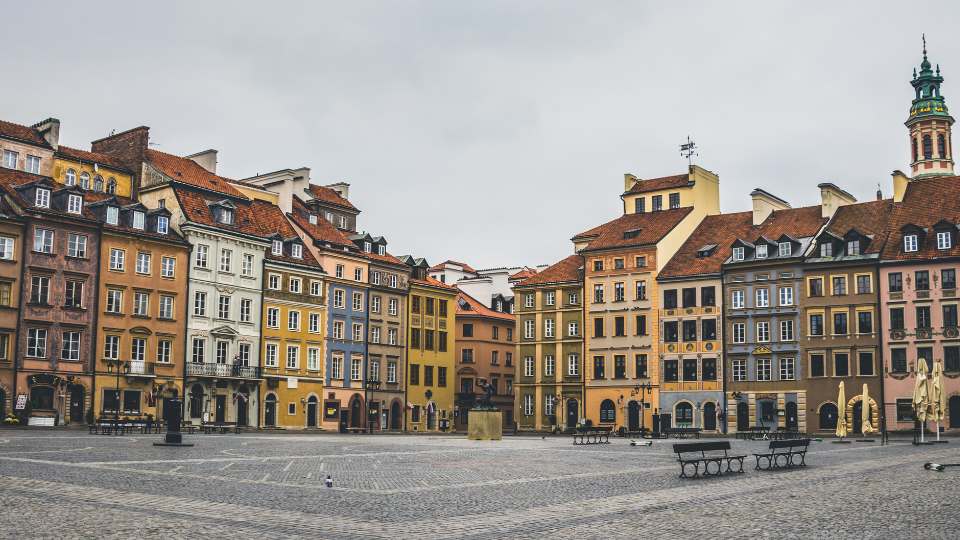
Warsaw’s Old Town, known as Stare Miasto, is the historic heart of the Polish capital and one of the most poignant and beautiful places to see in Warsaw. Although today it looks like something out of a medieval fairy tale, the truth is that it was completely rebuilt after the Second World War, having been reduced to rubble during the Nazi occupation. Thanks to painstaking work based on photographs, paintings and historical documents, it was so faithfully restored that UNESCO declared it a World Heritage Site in 1980.
Strolling through its cobbled streets, past pastel-coloured houses, cosy cafés, charming squares and small artisan shops, is to immerse yourself in the most resilient soul to be seen in Warsaw. Market Square (Rynek Starego Miasta), with its lively terraces and the Warsaw Mermaid in the centre, is the neighbourhood’s most iconic landmark. Here you will find street artists, art galleries and restaurants where you can try typical dishes such as pierogi or bigos.
Other highlights include the medieval City Wall, the Cathedral of St. John the Baptist and the curious Kanonia Bell Tower, next to which stands a huge bell that, according to tradition, grants wishes to those who ring it three times.
The Old Town is perfect for leisurely wandering around, discovering history in every stone and appreciating how an entire city was able to be reborn from its ruins.
An essential place to see in Warsaw, full of memory, life and charm.
DID YOU KNOW… Warsaw was 85% destroyed after World War II?
With DareMapp, you can discover the most famous ones… without getting lost among them!
Barbican

The Warsaw Barbican is one of the most unique defensive elements to see in Warsaw and a testimony to the city’s medieval past. Located between the Old Town and the New Town, this imposing semi-circular red brick construction was part of the ancient walls that protected the capital from the 16th century onwards. It was designed by the Italian architect Giovanni Battista as part of the fortification system to reinforce the security of the New Gate at the entrance to the city.
For centuries, the barbican fulfilled a strictly military function, allowing access to the historic centre to be controlled. Although it lost its strategic value over time, it remained a symbol to be seen in walled Warsaw until, like much of the city, it was destroyed during World War II. The current structure was faithfully reconstructed in the 1950s, based on old illustrations and surviving original fragments.
Today it is one of the most photographed and visited places in the old town, especially for its medieval aesthetics and fairy-tale atmosphere. Its towers, passages and walls are the perfect backdrop for imagining what life was like in the Warsaw of centuries past. Nearby you will find stalls of local artists, street musicians and craftsmen who liven up the atmosphere.
As well as being an ideal place to take photos, it also serves as a starting point for walks within the walls or to the Vistula River.
A jewel of defensive architecture to see in Warsaw, combining history, symbolism and medieval charm in the heart of the city centre.
Polish Army Military Cathedral.
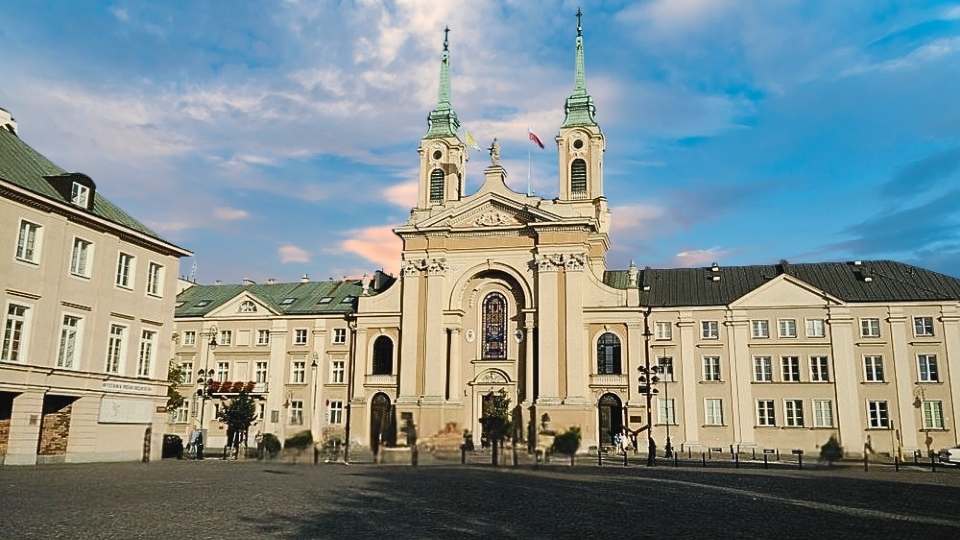
The Polish Army Military Cathedral, known in Polish as Katedra Polowa Wojska Polskiego, is one of the most unique churches to see in Warsaw. Located on Długa Street in the heart of the historic centre, this church is not only remarkable for its architectural value, but also for its deep symbolic and patriotic significance, as it is dedicated to Polish soldiers and national memory.
The building was originally a 17th century Baroque church belonging to the Bernardine order, built between 1641 and 1643. Over the centuries it changed hands and functions, but after World War I it was assigned to the care of the Polish Army and transformed into a military cathedral. Over the years it has hosted state funerals, military commemorations and celebrations in honour of the fallen in combat.
Inside the sober but solemn interior, you can see several chapels and memorial plaques dedicated to different Polish military units and campaigns, from Piłsudski’s legionnaires to the soldiers who fought in the Warsaw Uprising of 1944. It also houses the Museum of Military Chaplaincy, with exhibits related to the spiritual history of the army.
The church was damaged during World War II and faithfully restored in the years that followed. Today it is a place of recollection, but also a place of living history, where religion, homeland and the memory of those who defended Poland intersect.
A moving and different visit to see in Warsaw, ideal for those who want to get to know the most intimate and heroic side of the city.
Miodowa
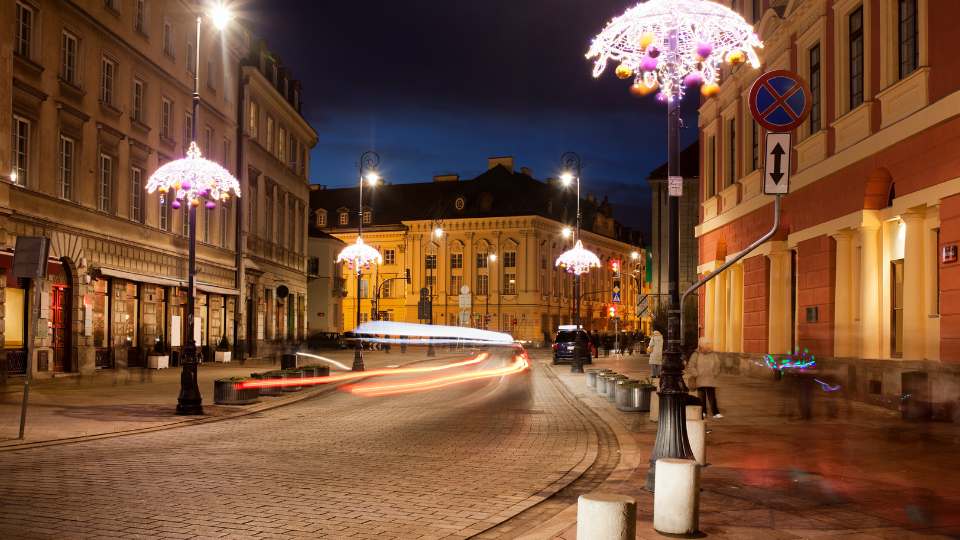
Miodowa Street is one of the most elegant, historic and architecturally valuable streets to see in Warsaw. Its name literally means “honey street”, as in ancient times it was home to numerous sweet shops and bakeries selling products made from honey. Today it is a stately artery connecting the Old Town with the area of the National Theatre and the Military Cathedral, forming part of the famous Royal Road (Trakt Królewski).
Miodowa is noted for its refined architecture, with palaces and residences from the 17th and 18th centuries showing the influence of Warsaw’s nobility and high society. Along this street you can see such representative buildings as the Branicki Palace, one of the best examples of urban baroque to see in Warsaw; the Palace of the Bishops of Kraków, with its majestic façade; and the Capuchin Church, where a mausoleum with the heart of King Jan III Sobieski is preserved.
During the Second World War, Miodowa was badly damaged, but it was meticulously reconstructed and today it allows us to imagine the splendour of pre-occupation Warsaw. To walk along this street is to step back in time, but also to see how history has been integrated into the city’s modern life.
Nearby are other key points such as the Ghetto Monument, Długa Street and the entrance to the New Town, making it an ideal area to take a leisurely stroll and enjoy its architectural details, interior courtyards and facades full of history.
One of the most stately and evocative streets to see in Warsaw, it is the perfect place to let yourself be carried away by palaces, history and baroque art.
Church of the Holy Cross

The Church of the Holy Cross is one of the most important and recognisable churches to see in Warsaw, both for its historical and symbolic value. It is located on Krakowskie Przedmieście Street, one of the main avenues in the centre, and is notable for its Baroque façade with twin towers, which have become part of the city’s urban landscape.
It was built between the 17th and 18th centuries on the site of an earlier church, and over time became a key venue for religious celebrations and patriotic events. It was severely damaged during World War II, especially during the Warsaw Uprising in 1944. Like many other buildings in the city, it was rebuilt after the war, respecting its original design.
The best-known detail of this church is that one of its pillars contains the heart of Frédéric Chopin, Poland’s most famous composer. According to his will, his heart was brought from Paris by his sister and is buried here, accompanied by an inscription in Latin that reads: “Where your treasure is, there your heart will be”. This place has become an emotional landmark for Poles and music lovers alike.
In addition to Chopin’s heart, the church also has memorial plaques dedicated to other important figures in Polish history and religious scenes of great artistic value. The Church of the Holy Cross is not only a place of worship, but also a symbol of Warsaw’s identity and resistance, and an essential stop for anyone who wants to understand the history and memory of the city.
Pilsudski Square

Piłsudski Square is one of the most emblematic places to see in Warsaw and a place full of national symbolism. It is located in the heart of the city centre and has been the scene of some of the most important events in Poland’s modern history. For centuries it was known as Saxon Square, as it was the site of the Saxon Palace, a royal residence that was completely destroyed during World War II. Today only part of its colonnade remains, where the Tomb of the Unknown Soldier, a monument dedicated to all Polish soldiers who died in combat, is permanently guarded by a guard of honour.
During the Nazi occupation, the square was renamed Adolf Hitler Square, and later, under the communist regime, it was renamed Victory Square. In 1979, it was the scene of the historic mass celebrated by Pope John Paul II, which marked a turning point in Polish social consciousness and the rise of the Solidarity movement. Since 1990, after the fall of communism, the square has been named after Józef Piłsudski, the marshal who led the country’s independence after the First World War.
Today, Piłsudski Square is the main venue for official events, military parades and commemorative ceremonies. It is also a place of recollection, where visitors and locals stop in front of the tomb with flowers, flags and respect. Its size, history and location make it one of the must-see places in Warsaw to understand Polish national identity.
Fryderyk Chopin Monument
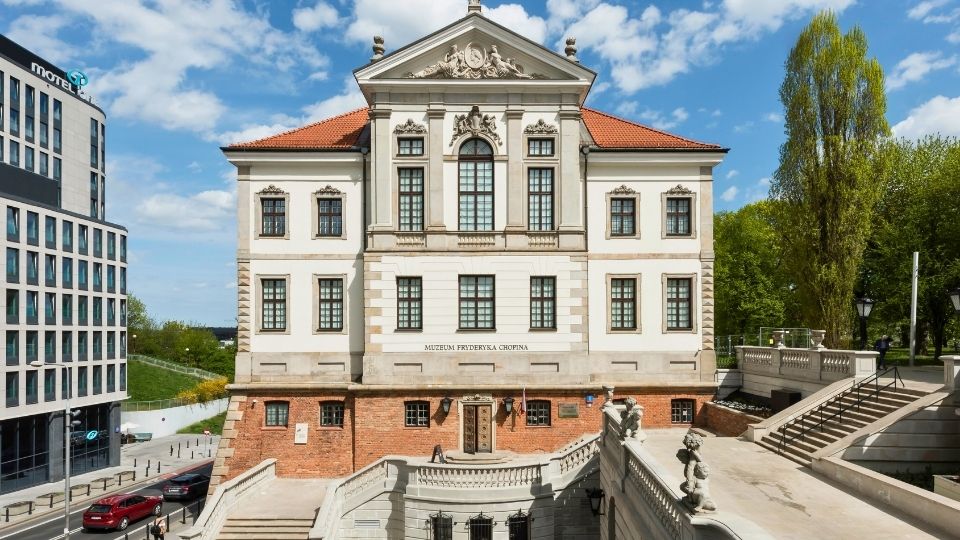
The Fryderyk Chopin Monument is one of the most important cultural icons to see in Warsaw and a tribute to Poland’s most famous composer. It is located in Łazienki Park, one of the most beautiful green spaces in the city, and is a must-see for lovers of music and Polish history. The sculpture depicts Chopin sitting under a willow tree in an image charged with national symbolism and romanticism, inspired by nature and the emotions conveyed by his music.
The monument was designed by Wacław Szymanowski in the early 20th century, but its unveiling was delayed by World War I and was not realised until 1926. During the Nazi occupation, the sculpture was destroyed by German troops in 1940 as part of a campaign to remove Polish cultural symbols. It was rebuilt after the war and reinstalled in the same place in 1958, with great symbolic value for the city and the country.
Every summer, free open-air piano concerts are held next to the monument, where performers from all over the world play pieces by Chopin in a natural and relaxed environment. This event has become a beloved tradition for locals and tourists alike, and reinforces the living connection between Warsaw and its most universal composer.
The Chopin Monument is not only a point of artistic interest, but also a place of encounter, contemplation and homage to a figure who represents the soul of Poland. Visiting it allows you to enjoy a quiet corner of the park and at the same time remember the legacy of one of the great geniuses of classical music.
Copernicus Monument
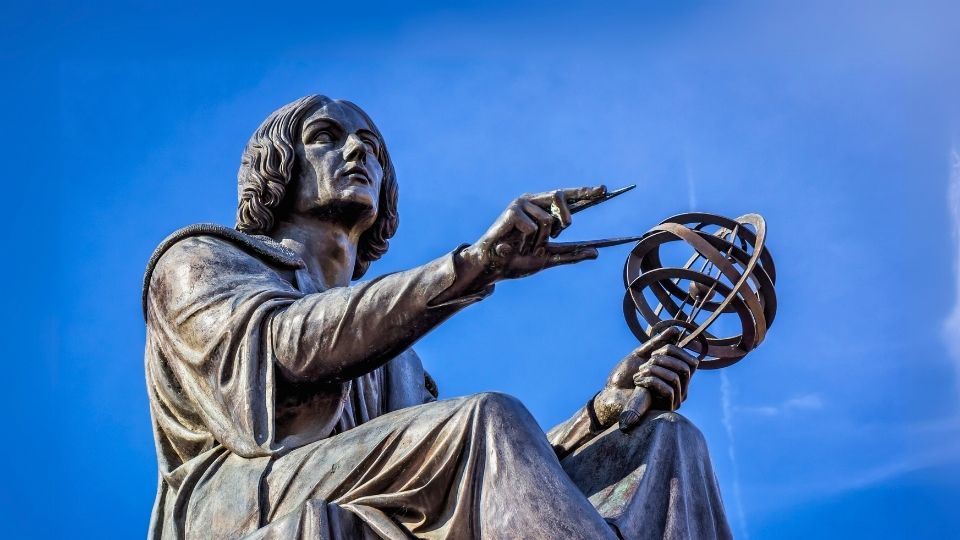
The Nicolaus Copernicus Monument is one of the most important monuments to see in Warsaw and a national tribute to the Polish astronomer who revolutionised science with his heliocentric theory. It is located opposite the Polish Academy of Sciences on Krakowskie Przedmieście Street, one of the historic arteries of the city centre. The sculpture shows Copernicus seated, holding a compass in one hand and an armillary sphere in the other, symbolising his contribution to the knowledge of the universe.
It was designed by the sculptor Bertel Thorvaldsen, who also designed the Copernicus monument in Kraków, and was unveiled in 1830. Since then, it has become a symbol of Poland’s intellectual pride and a regular place of homage by scientists, students and visitors. During the Nazi occupation, the original Polish inscription was removed by the Germans, but members of the resistance responded by placing a secret plaque with the phrase ‘The Polish people, to Copernicus’. After the war, the monument was completely restored and its original inscription was restored.
The surroundings of the monument are now a quiet, accessible space where visitors can sit and contemplate the sculpture or read the inscriptions explaining the importance of Copernicus. It is one of the key sights to see in Warsaw to understand Poland’s role in the history of science and modern thought.
Sigismund III Column
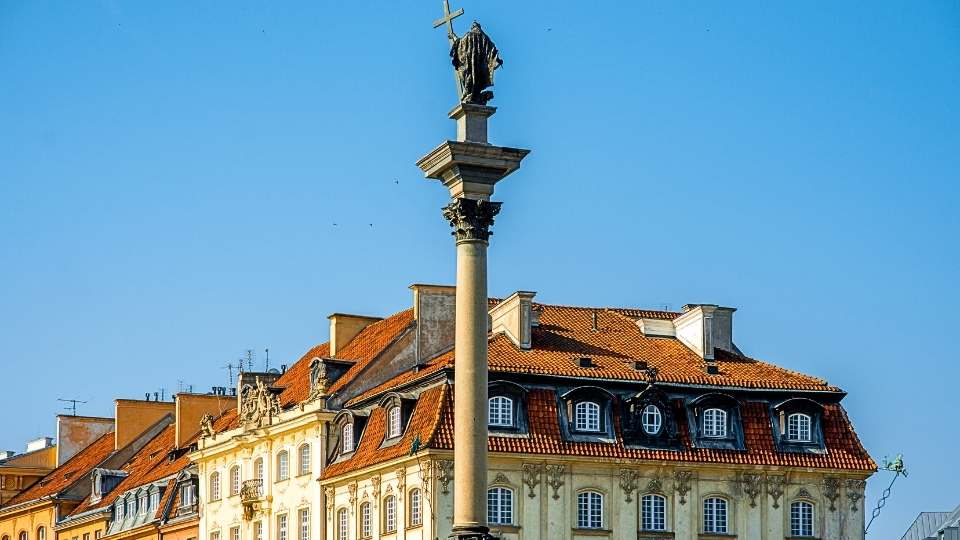
The Sigismund III Column is one of the most iconic monuments to see in Warsaw and a focal point of the historic centre. It stands in Castle Square, opposite the Royal Castle, and was erected in 1644 by King Vladislav IV in honour of his father, Sigismund III Vasa, the monarch who moved the country’s capital from Kraków to Warsaw in 1596.
The statue shows the king in armour, holding a sword in one hand and a cross in the other, as a symbol of defence of Christianity. The original column, made of red marble, was one of the first of its kind erected in Europe outside Italy, and marked a new style of memorial. During World War II, the column was demolished by the Nazis in 1944, and the original sculpture was damaged. After the war, the figure was restored and placed on a new granite column, slightly displaced from its original location.
Today, Sigismund’s Column is one of the most photographed sights to see in Warsaw and a regular meeting place for locals and tourists alike. Its imposing presence marks the beginning of the Royal Route and connects the country’s monarchical history with the present-day heart of the city.
Polish Vodka Museum

The Polish Vodka Museum is one of the most original cultural spaces to see in Warsaw. It is housed in a former 19th-century distillery within the revitalised Koneser complex in the Prague district. The museum offers an interactive tour through the history of vodka, its production process and its role in Polish culture and national identity.
During the guided tour, visitors walk through old production halls, learn about the ingredients and traditional techniques, and learn why Polish vodka is protected by law as a national product. The tour ends with a commented tasting of different premium vodkas, guided by experts who help to distinguish aromas, flavours and nuances.
The space combines history, technology and gastronomy, and is ideal for both aficionados and those who want to discover a different part of Polish culture.
You can buy your ticket for the vodka tasting tour here.
Wilanów Palace

Wilanów Palace is one of the most impressive palaces to see in Warsaw and one of the few historic buildings that survived the wars of the 20th century intact. It is located just outside the centre, in the Wilanów district, and is known as the “Polish Versailles” for its architecture and gardens. It was built in the 17th century as the summer residence of King John III Sobieski, the monarch who led the victory in the Battle of Vienna against the Ottoman Empire in 1683.
The building combines elements of Baroque architecture with Italian and Polish influences, and is decorated with sculptures, reliefs and paintings glorifying both the king and Polish history. Inside you can visit original halls, the portrait gallery, the royal chapel and a collection of historical art and furnishings. The complex also includes the Palace Museum, which offers temporary exhibitions and cultural activities throughout the year.
The palace gardens are another major attraction. Designed in the French and English style, they allow you to stroll among fountains, sculptures and ponds in a peaceful and well-tended setting. In addition, open-air concerts and shows are organised in summer.
Wilanów Palace is a must-see for those who want to learn about Poland’s monarchical and artistic history. It is also one of the best places to escape from the hustle and bustle of the city centre and enjoy a monumental setting surrounded by nature. It can be easily reached by public transport from the centre of Warsaw.
You can buy your ticket to visit the Wilanów Palace here .
Chopin Point Warsaw

Chopin Point Warsaw is one of the most intimate and special cultural spaces to see in Warsaw, dedicated to the music of Frédéric Chopin. Located in the House of Literature (Krakowskie Przedmieście 87/89) in the heart of the Old Town, it offers daily concerts at 19:00 in a cosy and elegant atmosphere with original art deco décor.
Each recital begins with a short introduction in English about Chopin’s life and the guest pianist. This is followed by a concert of approximately one hour by an internationally renowned performer, playing some of the composer’s most emblematic works, such as nocturnes, ballades, etudes and mazurkas. To complete the experience, a glass of mead or apple juice is offered before the concert.
Chopin Point Warsaw is an ideal choice for those seeking an authentic, up-close musical experience in a setting that reflects the spirit and sensibility of Chopin’s music.
You can buy your ticket for the concert at this link.
We hope this guide to the must-see sights in Warsaw will help you discover the magic of the “City of a Hundred Towers”. But if you want to experience it to the fullest, don’t miss the DareMapp app!
With it you’ll have everything in one app:
✅ Routes through the Old Town, the Barbican or the Warsaw Ghetto, among others.
✅ Local recommendations (the best cafés, breweries and the most important dishes).
✅ Excursions and fun activities in towns near the city.
nightlife plans (music bars, jazz clubs and more).
Everything to see in Warsaw and much more at your fingertips and from your mobile phone. Download it for free here!
💫You’re just one click away from swapping reading for adventure.
🗺️Tu route through Warsaw, with DareMapp
📍More than 30 points of interest
➤ An organised route to optimise your time
💡Recommendations, excursions & unique experiences
❓Questions, quizzes and more than 2h of narrated content

Warsaw is an open book of history, art and magic. We hope this guide to things to do in Warsaw will inspire you to explore it with the eyes of a curious traveller
Remember that with DareMapp you can take a multitude of interactive guided tours.
what better way than to travel and discover while learning in a fun way?


